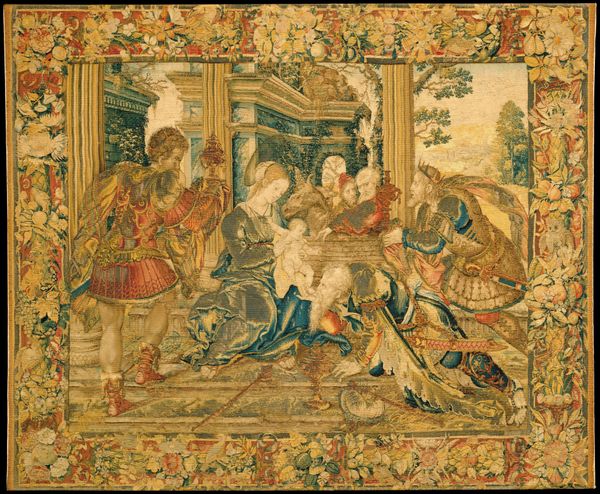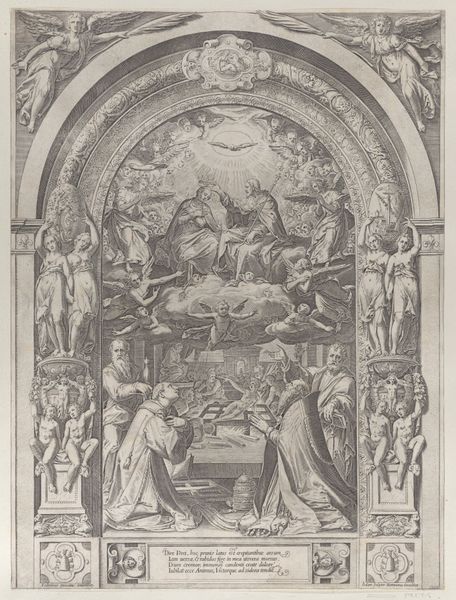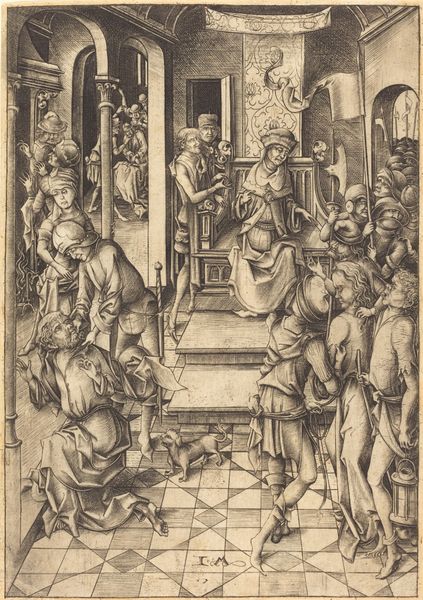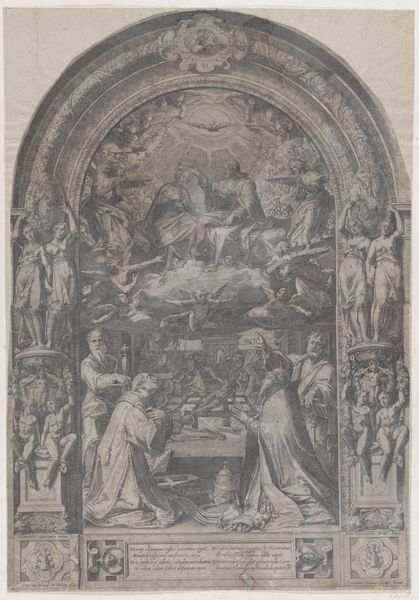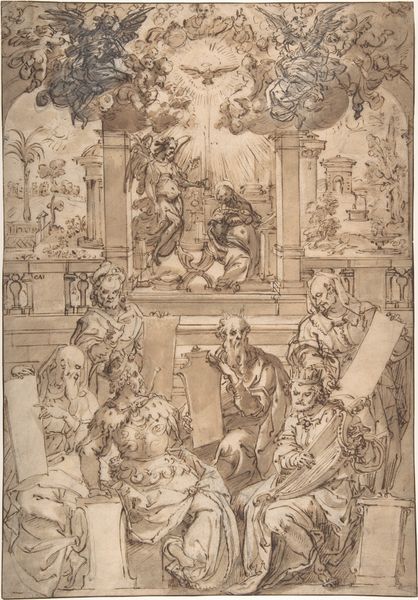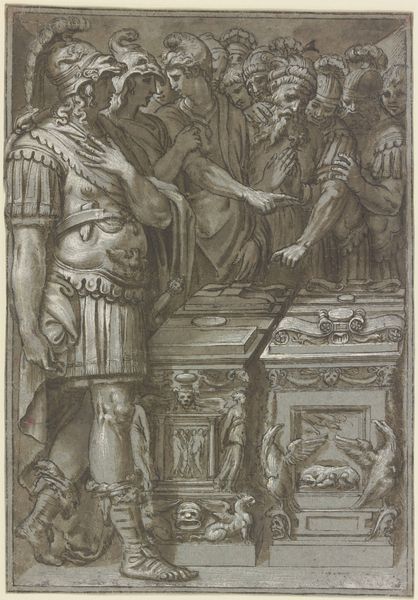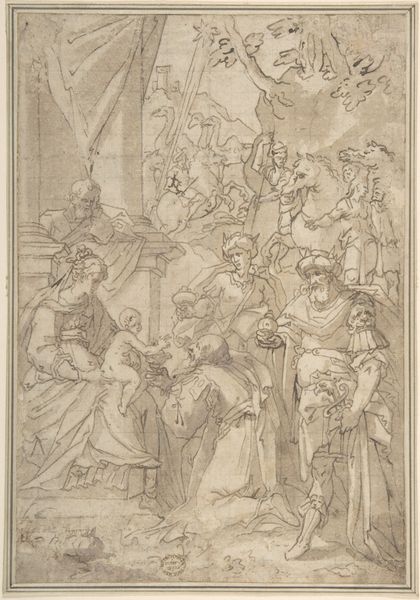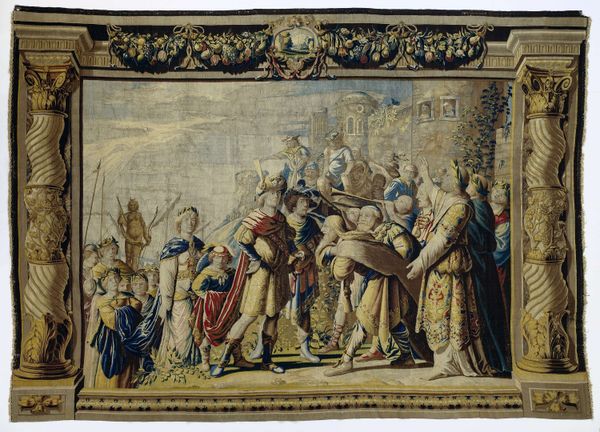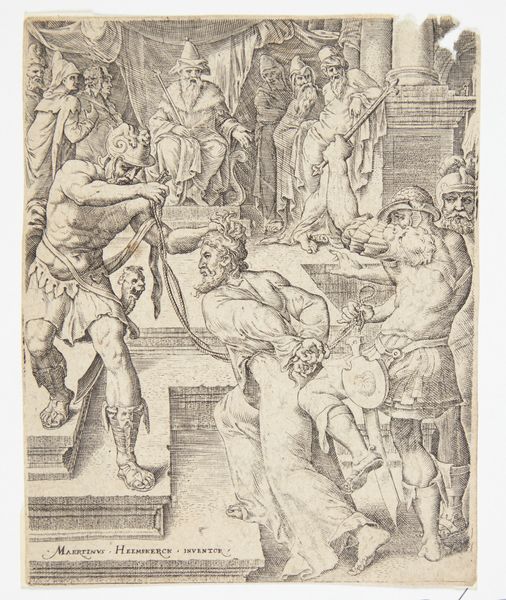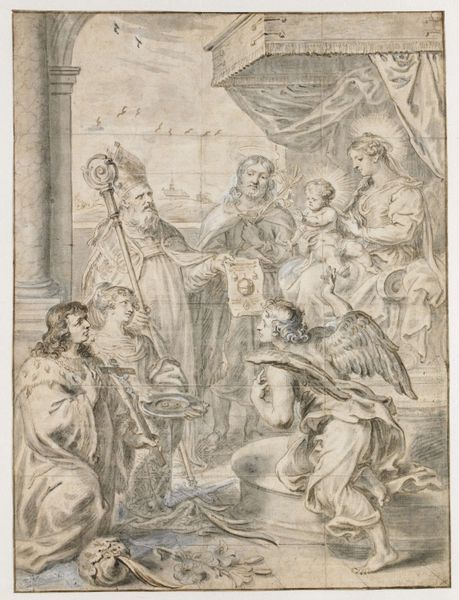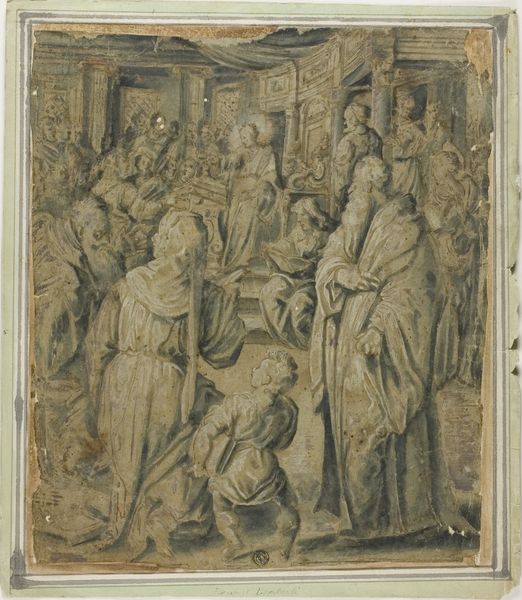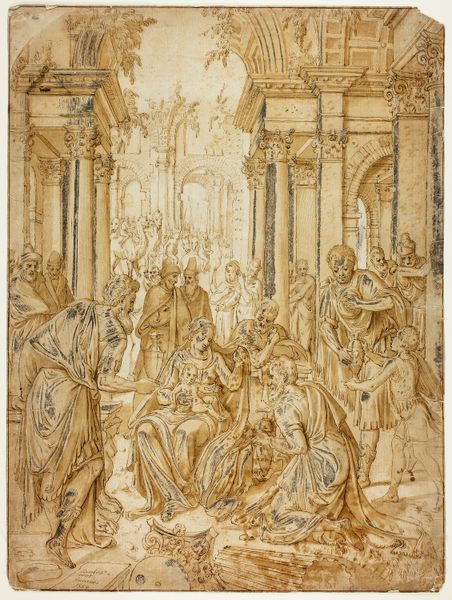
textile
#
portrait
#
narrative-art
#
baroque
#
sculpture
#
textile
#
figuration
#
traditional architecture
#
history-painting
Dimensions: height 374 cm, width 339 cm
Copyright: Rijks Museum: Open Domain
Editor: This woven tapestry, “Orestes’ Revenge on Aegisthus” by Pieter de Cracht, likely made between 1648 and 1662, presents such a grand, theatrical scene. I’m really struck by how the architectural details woven into the textile create a sort of frame within a frame. How do you interpret the way the artist uses composition to tell this story? Curator: It’s precisely that nested framing device which I find most compelling. The twisted columns, for instance, seem to exist independently of the scene behind them. This foreground and background create depth but also, in their contrasting textures, offer an ambiguity. Is it reality or a stage? Consider the folds in the green curtain. What effect do they create in relationship to the formal poses of the figures? Editor: The folds definitely add dynamism compared to the rather stiff poses. It almost feels like a tension between movement and stillness, heightened by the tapestry medium itself. Are the formal poses an expression of class or historical importance, considering this seems to represent an ancient narrative? Curator: Possibly, but it is equally important to note the use of diagonal lines that lead the eye to the central figures. The orthogonals of the architecture create a classical structure for what is quite a dynamic narrative. How does this blend of dynamism and rigid structure strike you? Editor: It’s an interesting juxtaposition that feels inherently Baroque. It almost forces you to see the figures as components within the artwork itself rather than the subject and to focus on the piece as a whole. Curator: Precisely! By examining these internal formal relationships, we gain insight into the work's aesthetic intentions. Editor: This focus on the formal elements makes me see the tapestry in a new light, not just as a representation, but as an object with its own intrinsic visual language.
Comments
No comments
Be the first to comment and join the conversation on the ultimate creative platform.
